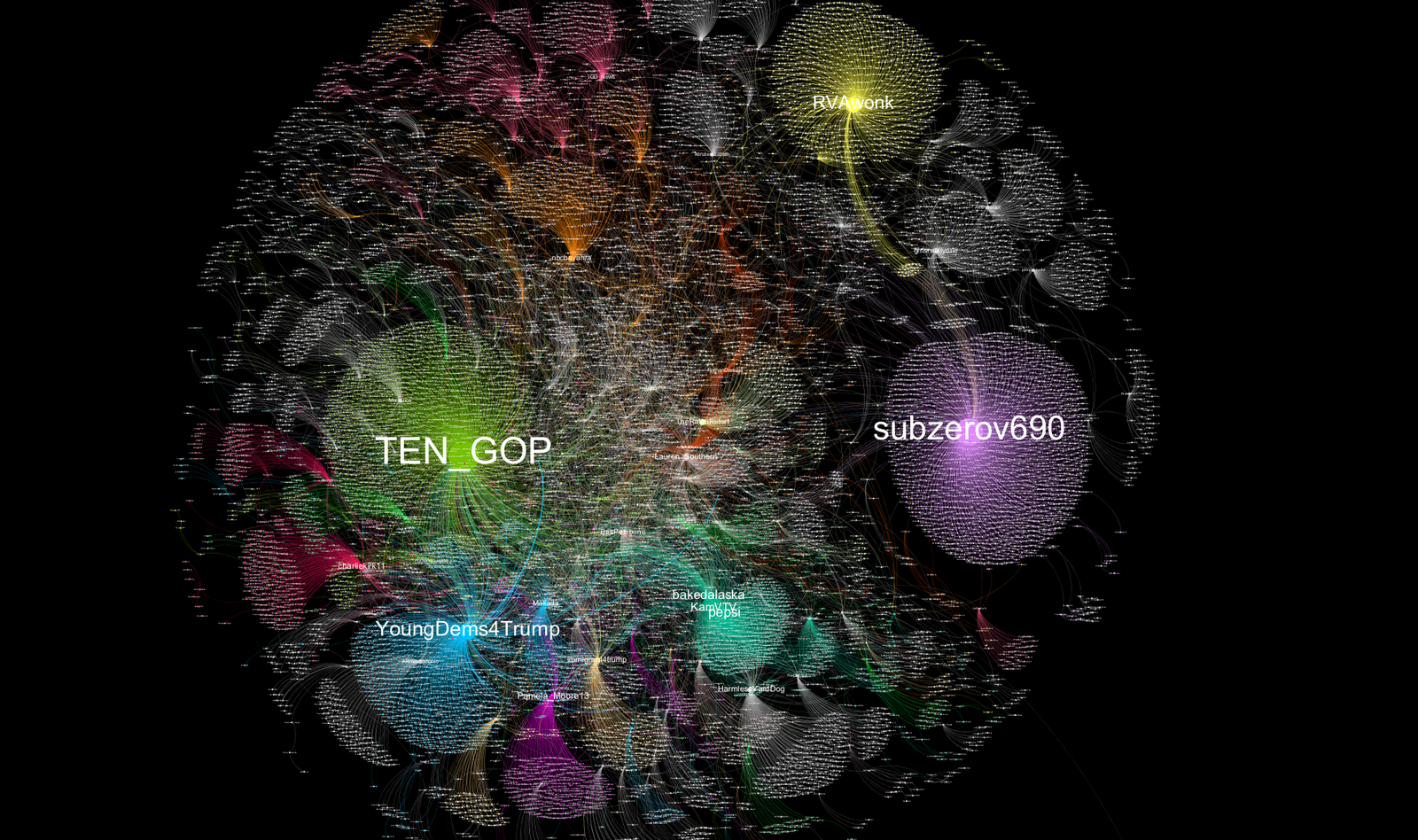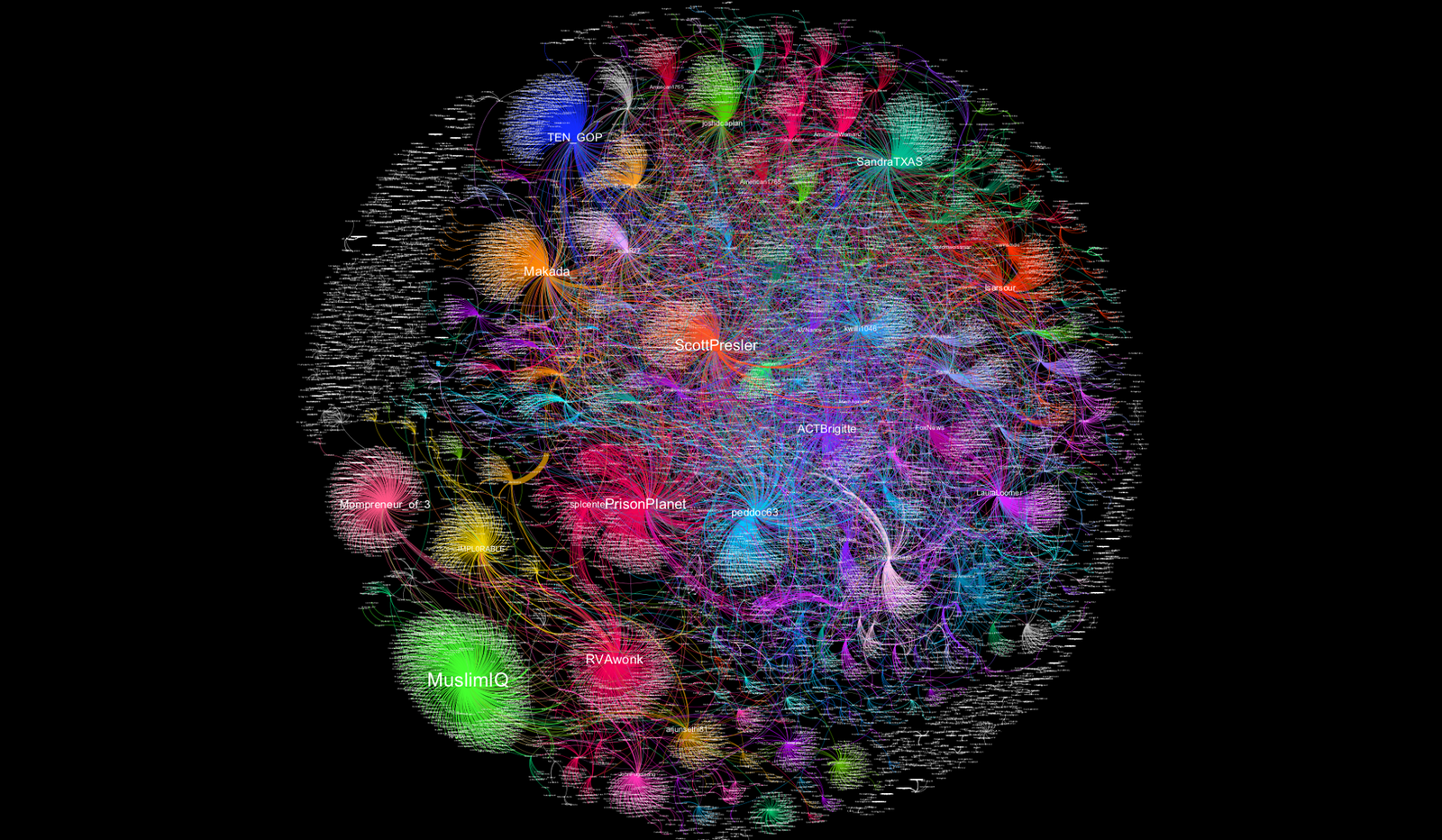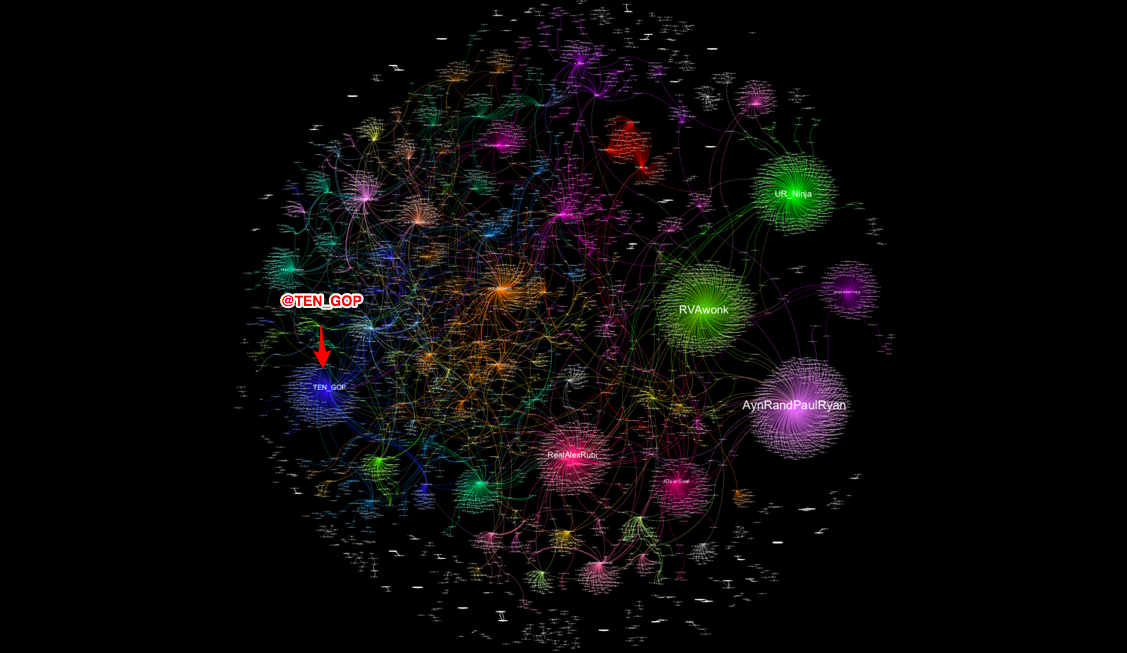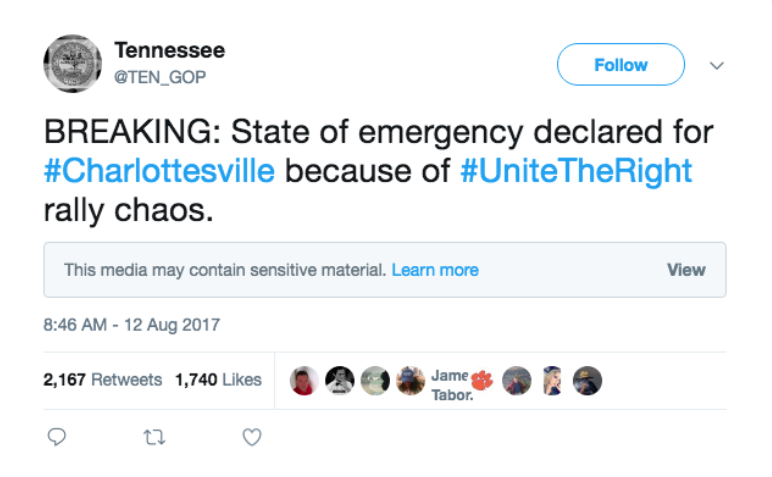
Throughout the spring and summer, the Kremlin-backed troll account @TEN_GOP pushed political hashtags for divisive events, including the Charlottesville "Unite The Right" rally, according to a new analysis of Twitter data.
Last week, reports emerged that @TEN_GOP, a popular Twitter account that the Tennessee Republican Party purportedly managed, was, in fact, run by the Kremlin-backed Internet Research Agency, which operated a network of propaganda-pushing troll accounts. @TEN_GOP, which had over 140,000 followers, was widely cited in the pro-Trump media sphere and even retweeted by members of the Trump campaign just before the election.
Reports show that the account tweeted Russian propaganda, as well as polarizing political content, but since Twitter suspended @TEN_GOP in August (Twitter does not comment on individual accounts for security reasons), it's difficult to get a sense of what the account was tweeting, as well as the size of its influence.
However, a hashtag analysis by multimedia artist Erin Gallagher offers a glimpse at how the troll account worked in tandem with the pro-Trump media ecosystem to help push politically divisive narratives across Twitter. Gallagher, who maps prominent political and pro-Trump hashtags, noticed @TEN_GOP had appeared prominently in some of her old charts after last week's reports linking the account to the Internet Research Agency.
Below are four charts that show how @TEN_GOP helped spread hashtags related to some of the spring and summer's most politically charged events.
A few things to note before the data:
- The charts capture only four specific hashtags from the highly active account and thus reflect a very small portion of its total body of tweets.
- The size of the nodes demonstrates the reach of a specific account in spreading a particular hashtag (the bigger the node, the more accounts it reached) and the distance between nodes is an indication of degrees of separation of the accounts (the greater the distance, the less common connections the two accounts have).
- Gallagher cautions that the charts are best read as a snapshot of a moment at the time they were analyzed, meaning any tweet in this ecosystem could go viral and change the scale of the chart.
- The charts don't take into account sentiment information, meaning that the tweets about the event could be in favor of the event, against it, or neutral.
As such, Gallagher suggests that determining the precise influence of the account on its followers is both subjective and abstract. "It definitely had influence," she told BuzzFeed News, "but I'd say it was just one component in a big machine."
April 15, 2017 - #Berkeley Protests

Gallagher's chart — which captures 17,243 #Berkeley tweets between April 15 and 16 — shows that @TEN_GOP was one of the top influencers in spreading the #Berkeley hashtag last April. In this case, the #Berkeley hashtag is in reference to a pro-Trump rally at the University of California-Berkley's campus on April 15, which turned violent when fights broke out between Antifa and pro-Trump groups, as well as white supremacist groups.
April 15, 2017 - #Antifa

During the Berkeley protests, @TEN_GOP was also tweeting the #Antifa hashtag associated with the Berkeley protests. Gallagher's chart captures 11,522 #Antifa tweets from the Berkeley protest between April 15 and 16. The data shows that, unlike #Berkeley, @TEN_GOP was not nearly as influential when pushing the #Antifa hashtag and is hard to even spot in this visualization:

Still, a zoomed-in look shows that @TEN_GOP's tweets had slightly more connections — and thus more reach — than pro-Trump media figures Mike Cernovich, Lauren Southern, and organizations like the ProudBoysUSA.
June 2017 - #MarchAgainstSharia

According to Gallagher's chart — which captures 13,790 tweets between June 10 and June 12 — @TEN_GOP prominently promoted the #MarchAgainstSharia that ACT for America organized, and which attracted pro-Trump and far-right extremist groups. Though @TEN_GOP did not have as much reach as pro-Trump media accounts like that of Infowars editor Paul Joseph Watson (@PrisonPlanet) or @MuslimIQ (a group tweeting in condemnation of the event), the account was still a visible presence in the greater hashtag conversation.
August 12, 2017 - #UniteTheRight

Gallagher's final chart captures roughly 6,000 tweets from before, during, and after the Charlottesville #UniteTheRight protests on August 12, in which white nationalists clashed with counter protesters, resulting in the death of one counter protester. Of the tweets that Gallagher captured (a glitch in the data capturing tool caused it to save fewer tweets during the event), @TEN_GOP appears to have been one of many influential tweeters for the event.
Here's a closer look at @TEN_GOP's node:

Again, it's important to note that this does not indicate @TEN_GOP was tweeting explicitly in favor of or against the white nationalists in Charlottesville. Here, for example, is one of the account's archived tweets from the rally:

What does it all mean?
While its difficult to define @TEN_GOP's exact influence, the charts illustrate two important points:
- Regardless of the content of its tweets, the @TEN_GOP account chose to amplify politically divisive events to its legion of followers. And while it's unclear the exact motivations of the account, the charts show that @TEN_GOP increased the visibility of the events, which all contributed to a greater narrative of political unrest.
- @TEN_GOP is one part of a massive, complicated information war being waged across Twitter and the internet as a whole. Part of why the account's influence is so hard to calculate is because it is just one node in a complex and interconnected system. On its own, @TEN_GOP — like so many other automated or pro-Trump accounts — has limited reach. But in the aggregate, these many accounts play off of and amplify each other. Together, they help to create a fully fleshed narrative. In the case of these four examples, that narrative is one of political discord and instability.
